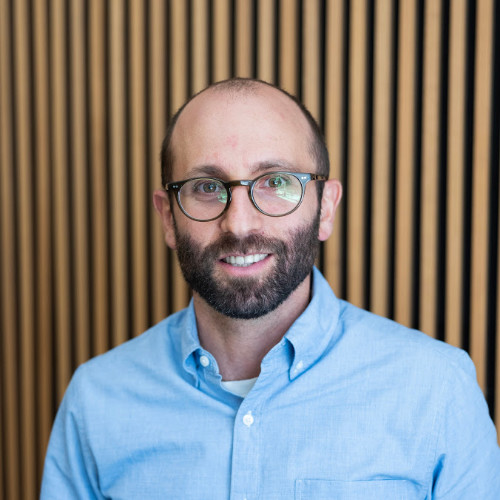From Kenya to the Ivy League: How Global Problem-Solving Equips the Next Generation of Scholars

In a post-affirmative action era, selective colleges face a defining question: how do you find brilliance when traditional markers—legacy, race, even test scores—are no longer enough?
Selective colleges are looking for new ways to identify potential. Often, admissions officers find it in places they’ve overlooked. They are increasingly prioritizing collaboration, interdisciplinary thinking, and real-world problem-solving, especially among students from underrepresented and global backgrounds.
This shift comes amid a pivotal redefinition of equity and access in admissions. The Trump administration’s executive orders to curb “illegal private-sector DEI preferences” and proxies for race, have upended search and selection criteria for many major universities.
At KenSAP, we’ve seen firsthand how these shifts create new opportunities for students who might once have been overlooked—motivated, resilient, and community-rooted learners poised to lead. For nearly 20 years, our organization has prepared high-achieving, low-income Kenyan students for admission to the most selective universities in the United States. In recent years, experiential learning opportunities, such as the Global Problem Solving Institute (GPSI), a virtual institute offered by Pioneer Academics, have become a crucial component of this journey.
These experiences do more than strengthen applications. They equip students with the collaborative and research-based skills needed to thrive on campus and beyond.
A First-Gen Story of Impact
Take Nyankiir (last name redacted for privacy), a KenSAP scholar who grew up in Kenya. Today, she studies computational neuroscience and global health policy at Harvard. But her path was far from linear. “My parents never went to school,” she shared. “I never thought I’d have a spot in the U.S.”
After high school, Nyankiir spent three years volunteering in her community before discovering a focus on problem-solving, which was her “first window into data collection, medical anthropology, and thinking about healthcare not just from a doctor’s perspective, but through community impact.” Her GPSI cohort studied diabetes in rural Kenya, research that helped her see the power of public health beyond the clinic.
When applying to college, she sought institutions with strong research environments and global missions. Harvard stood out. “I saw how small questions could lead to big change,” she said.
Why Problem-Solving and Collaboration Matter More Than Ever
The National Association of Colleges and Employers reports that 90% of employers seek problem-solving abilities and nearly 80% prioritize strong teamwork skills when reviewing resumes. In response, many institutions are innovating by leaning into experiences that develop and signal the very attributes they value—curiosity, empathy, adaptability, and purpose. Programs like GPSI do exactly that, particularly for students from underserved international contexts.
Launching Global Talent
In 2023 alone, four KenSAP scholars, Roberto Carlos, Tatyana Wabwire, Tommy Mageto, and Nyankir completed GPSI or its sister program, Pioneer Academics. All gained admission to Ivy League or peer institutions: Harvard, Princeton, and Northwestern.
Roberto, a molecular biology student at Princeton, helped develop community-informed solutions to Type 2 diabetes in Nairobi. “It was the first time I worked on a solution with a community, not just for them,” he said. “That idea stuck with me and shapes my research goals today.”
Tatyana, also at Princeton, conducted a six-month project on medieval Mediterranean architecture. She now documents disappearing architectural traditions in Kenya. “It wasn’t just about the subject,” she said. “It was about learning to collaborate, ask questions, and organize my thinking.”
At Northwestern, Tommy credits GPSI with giving him a head start. “We practiced empathy interviews and problem framing,” he said. “My peers struggled with that in entrepreneurship courses, but I already had a playbook.”
Bridging the Readiness Gap
For first-generation students like these, many of whom come from families without prior experience in higher education, programs that build research skills, foster global fluency, and offer early mentorship from faculty at U.S. universities are crucial bridges. In short, they align student readiness with institutional expectations, especially as colleges seek students who will thrive in collaborative, interdisciplinary environments.
In Kenya, where only 11% of the university-age population enrolls in higher education (compared to 39% in the U.S.), access to these kinds of programs can be life-changing. Since our founding, KenSAP has helped over 320 Kenyan students gain admission to top U.S. colleges, with a near 100% graduation rate, at no cost to the students or their families.
A Model for Higher Ed’s Future
As legacy admissions and standardized testing face scrutiny, colleges are leaning into problem-based learning, civic engagement, and interdisciplinary majors to define student success. Institutions like Harvard, Princeton, and Northwestern reaffirm that diversity and excellence are not in conflict. They are investing in pipeline partnerships, holistic evaluation, and indicators like lived experience, initiative, and intellectual risk-taking.
These efforts offer a strategic, legally sound path forward for admissions leaders navigating a post-affirmative action landscape.
A Blueprint for Admissions Leaders
The path ahead is clear:
- Invest in partnerships that expand global access and equity.
- Prioritize potential through problem-solving, collaboration, and purpose, not just polish or privilege.
- Equip international students with programs that foster readiness and resilience.
Students like Nyankiir are ready. They’ve done the work, built solutions, and led in their communities. Now, they need opportunities and institutions that recognize what true potential looks like.


























